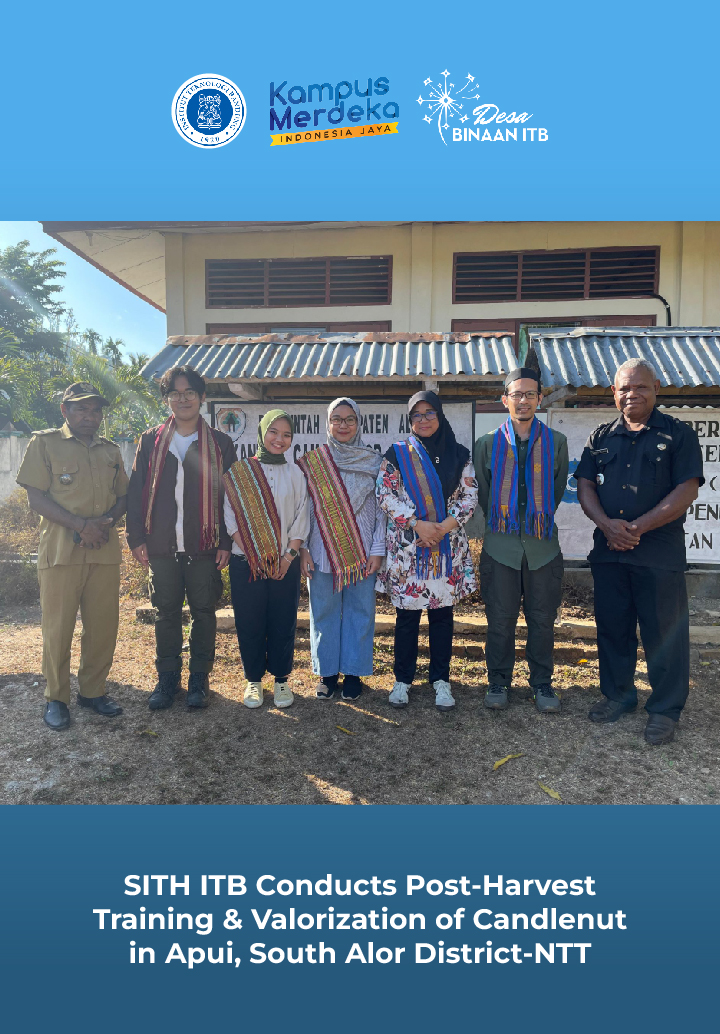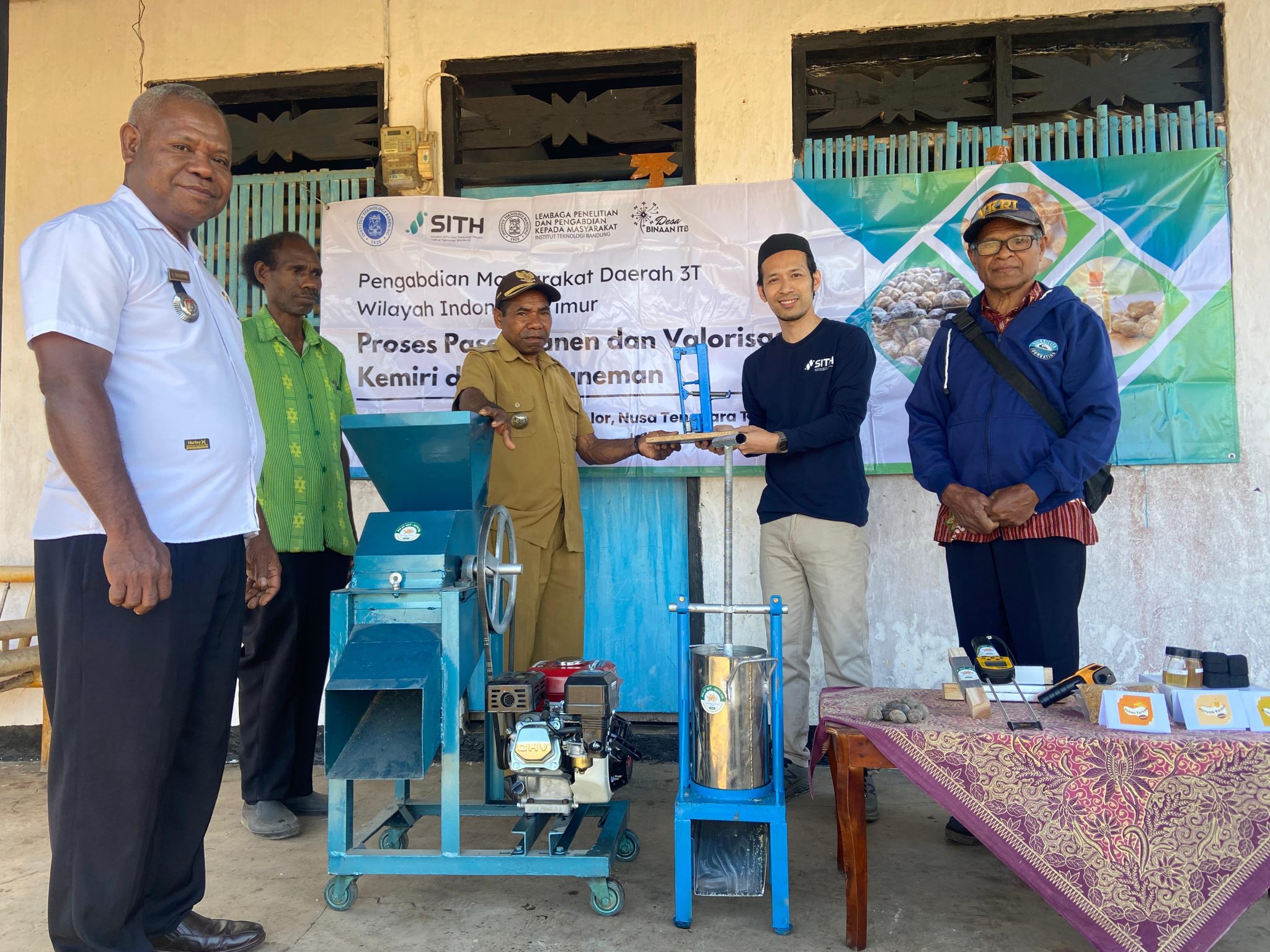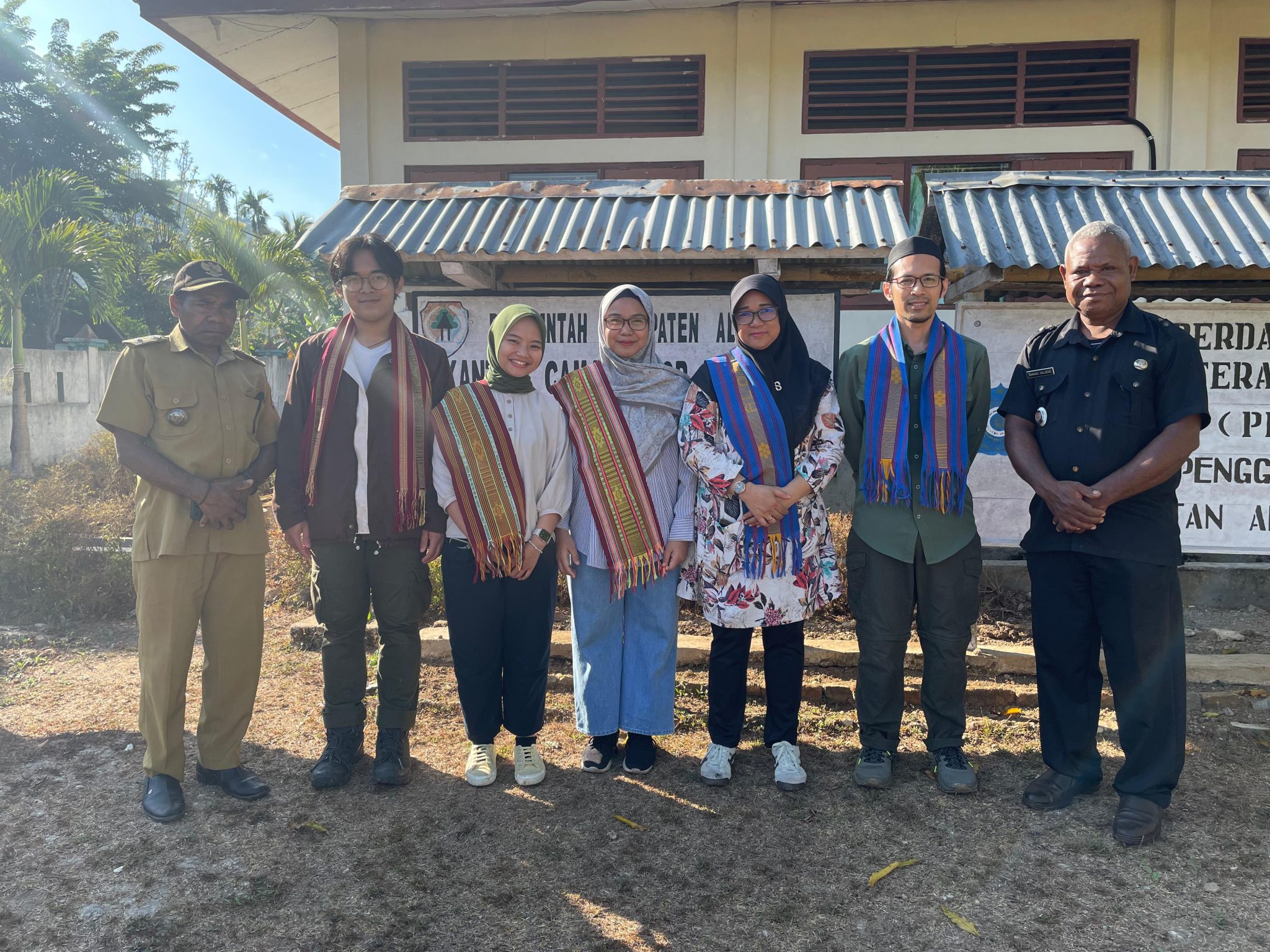

The Bandung Institute of Technology (ITB) through the School of Life Sciences and Technology (SITH ITB) held a community service activity through the "Community Service Program for 3T Areas in Eastern Indonesia 2023" in Apui, South Alor District, Alor Regency, East Nusa Tenggara.
Unlike the first visit by the ITB team in August 2023, which took place in Kuneman Village, this time the activity was carried out in the district capital, Apui, with the aim of having a greater impact on the surrounding community.
This activity, funded by ITB's LPPM, is a collaborative program with the Ministry of Village, Disadvantaged Regions Development, and Transmigration of the Republic of Indonesia.
The community service team was led by Dr. M Yusuf Abduh as the project leader and consisted of faculty members, namely Dr. Rijanti Rahaju Maulani and Dr. Lili Melani, as well as three students, Adela Damika Putri, Anasya Rahmawati, and Muhammad Zaki Arrazi.
The main focus of this follow-up visit was to provide training to the residents of Kuneman Village and the surrounding areas of South Alor District on the post-harvest procedures of candlenut seeds and the valorization of candlenut seeds into various bioproducts such as candlenut oil, candlenut shell briquettes, and candlenut meal animal feed. Additionally, equipment was provided and technical demonstrations were conducted on the use of candlenut seed cracking and oil pressing tools.
The training session was inaugurated by the Sub-district Head of South Alor, Imanuel Saldeng, S.H., followed by the handover of candlenut seed cracking machines and several other equipment to support the candlenut processing process. Subsequently, Dr. Yusuf provided a general explanation of the tools used for the training activities.
The first tool is a candlenut seed cracking machine powered by gasoline with a capacity of 40 kg/hour. Then there is a manual candlenut cracker with a spring mechanism, which is used based on the size of the candlenut seeds by adjusting the angle of impact. The next tool is a moisture meter used to measure the moisture content of candlenuts that have been dried or roasted before further processing.
Good quality candlenuts after drying or roasting should have a moisture content below 10%. Then the screw press machine is used to extract candlenut oil. The last tool is a briquette maker used to shape the candlenut shell briquettes according to the desired shape.
In the first session regarding post-harvest procedures of candlenuts, Dr. Rijanti explained the fruit processing process after harvest, which includes various processes such as fruit skin peeling, seed drying, seed storage, seed sorting, roasting, and immersion in cold water (temperature shock), drying, shell cracking, and sorting and packaging of candlenut meat. Dr. Rijanti's explanation was accompanied by the practice of candlenut seed sorting and moisture content detection using a moisture meter.
Dr. Rijanti stated that good quality candlenuts have a moisture content below 10%. The session continued with the practice of roasting and immersion in cold water, which aims to soften the candlenut shells for easy cracking. This process is marked by the sound of "crackling" and is completed when the sound is no longer heard, followed by drying the candlenuts. After drying, the candlenuts are then cracked using a candlenut cracking machine, resulting in whole candlenuts, some cracked candlenuts, and candlenut shells. Whole candlenuts can be packaged and sold directly in the market. The cracked candlenuts produced can be reused to obtain oil, briquettes, and animal feed.
The second session demonstrated the valorization or added value of candlenuts presented by Dr. Yusuf, Dr. Lili, and Adela M.Si, starting with the extraction of oil from cracked candlenuts using mechanical extraction methods using a manual screw press. The extraction results in candlenut oil and candlenut meal.

